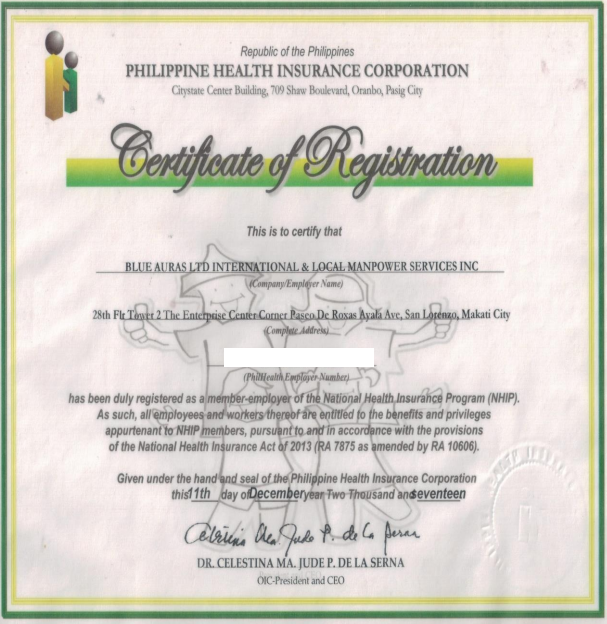In the Philippines, employers play a crucial role in ensuring the well-being of their workforce by meeting legal requirements, including PhilHealth Employer Registration. This statutory registration ensures that employees are covered by the National Health Insurance Program, providing them access to vital healthcare services. By fulfilling this responsibility, employers comply with the law and support their employees’ health needs, contributing to a healthier and more productive workforce.
In this article, we’ll walk you through the PhilHealth Employer Registration process, including the required documents, steps, and frequently asked questions. Read on to learn how to get started and ensure your employees are properly covered. Let us know in the comments if you need further assistance!
PhilHealth Employer Registration FAQs
Here are some frequently asked questions (FAQs) about PhilHealth Employer Registration to help you understand the process and its importance.
What is PhilHealth?
The Philippine Health Insurance Corporation, or PhilHealth, is the Philippine government’s health insurance program that provides medical coverage for Filipino citizens. It helps pay for hospitalization, treatment, and other healthcare services through contributions from employees, employers, and the government.
What is PhilHealth Employer Registration?
PhilHealth Employer Registration is the process where employers sign up with PhilHealth to receive a permanent PhilHealth Employer Number (PEN) and to ensure their employees are covered under the health insurance program.
What is the Legal Basis for PhilHealth Employer Registration?
PhilHealth Employer Registration is mandated by the National Health Insurance Act of 1995 (Republic Act No. 7875) and its amendments, such as the Universal Health Care Act (Republic Act No. 11223).
Who Requires PhilHealth Employer Registration?
All employers in the Philippines, whether in the private or government sectors, are mandated by law to register with PhilHealth. They must also facilitate the registration of new employees without a PhilHealth account.
What is the Importance of PhilHealth Employer Registration?
PhilHealth employer registration ensures employees are covered by health insurance, giving them access to healthcare benefits. It is a legal requirement for employers and helps ensure employees get financial support for medical needs.
What are the Penalties for Non-Registration with PhilHealth?
Under Sections 178 and 179 of the RIRR of the National Health Insurance Act of 2013, employers who fail to register or deduct PhilHealth contributions, or fail to remit them within 30 days, face fines ranging from PHP 5,000 to PHP 10,000, multiplied by the number of employees.
PhilHealth Employer Registration Requirements
The following forms and supporting documents are necessary for PhilHealth employer registration, covering employer details, employee reports, online access, and the designation of a representative for managing PhilHealth transactions.
PhilHealth Employer Data Record (ER1)
This is a two-part official form used for registering government or private sector employers, with the first part collecting basic employer information and the second part reserved for PhilHealth personnel, after which the employer is issued a unique PhilHealth Employer Number (PEN).
PhilHealth Report on Employee-Members (ER2)
This form reports employee-members’ details, including their PhilHealth numbers, positions, salaries, employment dates, and previous employers, and is the counterpart of the SSS Form R-1A or the SSS Employment Report.
PhilHealth Online Access Form 001 (POAF 001)
This form is submitted to PhilHealth to grant the employer access to the Electronic Premium Reporting System (EPRS) and create an online account, serving as the counterpart to the SSS Web Registration for Employer Form.
PhilHealth Employer’s Engagement Representative (PEER) Information Sheet
This form is the official application for the employer’s designated PhilHealth Employer’s Engagement Representative (PEER), typically a human resource or accounting staff member authorized to handle PhilHealth transactions, and should be listed in the ER2 (PhilHealth Report on Employee-Members).
Supporting Documents
These include business registration documents, e.g., DTI Certificate of Registration, Business or Mayor’s Permit, SEC Articles of Incorporation, etc.
Authorization Letters and ID Cards
If the PhilHealth employer registration will be processed by another person other than the company officer or employer, these are normally required to be presented at the PhilHealth servicing branch.
Step-by-Step Guide to PhilHealth Employer Registration
The PhilHealth employer registration process involves several steps to ensure that businesses comply with the National Health Insurance Program and that their employees are properly covered. Here’s a simplified guide to the registration process:
1. Prepare All Documentary Requirements.
Complete the necessary PhilHealth employer registration forms (e.g., ER1, ER2, POAF 001, etc.) with complete and accurate information. The required supporting documents may vary depending on the business type and structure, e.g., a sole proprietorship requires a DTI Certificate and Mayor’s Permit.
2. File the Application with the PhilHealth Servicing Branch.
Once documentary requirements are drafted and gathered, proceed to the nearest PhilHealth servicing branch for the filing of the application. If through a representative, an authorization letter and ID cards are normally required.
3. Receive the PhilHealth Certificate of Registration (COR).
After evaluating the documents, PhilHealth will issue the Certificate of Registration (COR) bearing the PhilHealth Employer Number (PEN), Employer’s Data Record (EDR), Member Data Records (MDRs), and stamped copies of the forms. In some cases, employees’ PhilHealth IDs may also be released on the same day or require follow-up.
4. Email ePOAF 001 to PhilHealth.
Based on the latest PhilHealth policy, the application for access to the Electronic Premium Reporting System (EPRS), PhilHealth’s online system, must be processed through email. Thus, the POAF (PhilHealth Online Access Form) 001 must be emailed after the filing of documents.
5. Activate the EPRS Account.
Wait for the email reply containing the EPRS activation link, user ID, and password. It may take one (1) to two (2) weeks for PhilHealth to send the login credentials. Once received, access the link and change the temporary password immediately.

PhilHealth Duties and Responsibilities of Employers
Employers in the Philippines have important duties and responsibilities regarding PhilHealth to ensure their employees are properly registered, covered, and receiving the healthcare benefits they are entitled to.
On Registration and Amendments
To comply with PhilHealth requirements, employers must first register their company or business to be assigned a PhilHealth Employer Number (PEN). All employees should then be registered with PhilHealth to receive a PhilHealth Identification Number (PIN). New hires must be enrolled within 30 days of their employment start date.
Employers are also required to notify PhilHealth of any employee separations within 30 days through the Employer’s Remittance Report (RF-1). Additionally, any changes in company information, such as address, business name, or the temporary or permanent cessation of business operations, must be promptly reported to PhilHealth.
On Premium Contributions and Remittances
Employers must deduct monthly contributions from employees’ salaries according to the premium contribution schedule and remit both the employee and employer’s share to PhilHealth or an accredited bank on or before the 10th day of the following month. The Employer’s Remittance Report (RF-1) should be submitted to PhilHealth by the 15th of the month following the applicable month.
Employers must also settle any outstanding arrears in premium remittances with PhilHealth and comply with all rules related to contributions and remittances. Failure to do so may result in penalties under PhilHealth’s Implementing Rules and Regulations (IRRs).
On Benefit Availment
Employers should keep employees informed about updates in PhilHealth policies and increases in benefits. They must also ensure that the PhilHealth Claim Form 1 is accurately filled out and certified, along with meeting other requirements for employees to access benefits. If there are any unclear guidelines or requirements regarding benefit availment, employers should seek clarification from a PhilHealth office to ensure proper compliance.
In conclusion, PhilHealth Employer Registration is a crucial step for businesses and employers to ensure their employees are covered by the National Health Insurance Program. By registering, employers not only fulfill their legal obligations but also provide their employees with access to essential healthcare benefits.
… and you might just need our assistance.
FilePino is a one-stop-shop business consulting firm trusted by thousands of clients for their business formation and post-formation needs. We offer complete packages of business registration and business permit renewal services (i.e., including employer registrations). With its sister companies and brands, we guarantee fast, efficient, and seamless fulfillment of your business service needs.
Ready to process your PhilHealth employer registration? Set up a consultation with FilePino today! Call us at (02) 8478-5826 (landline) and 0917 892 2337 (mobile) or send an email to info@filepino.com.










2 Responses
call back
Hi Jaysyl! Thank you for reaching out. For immediate assistance, kindly call us at (02) 8478-5826 (landline) and 0917 892 2337 (mobile) or send an email to info@filepino.com.